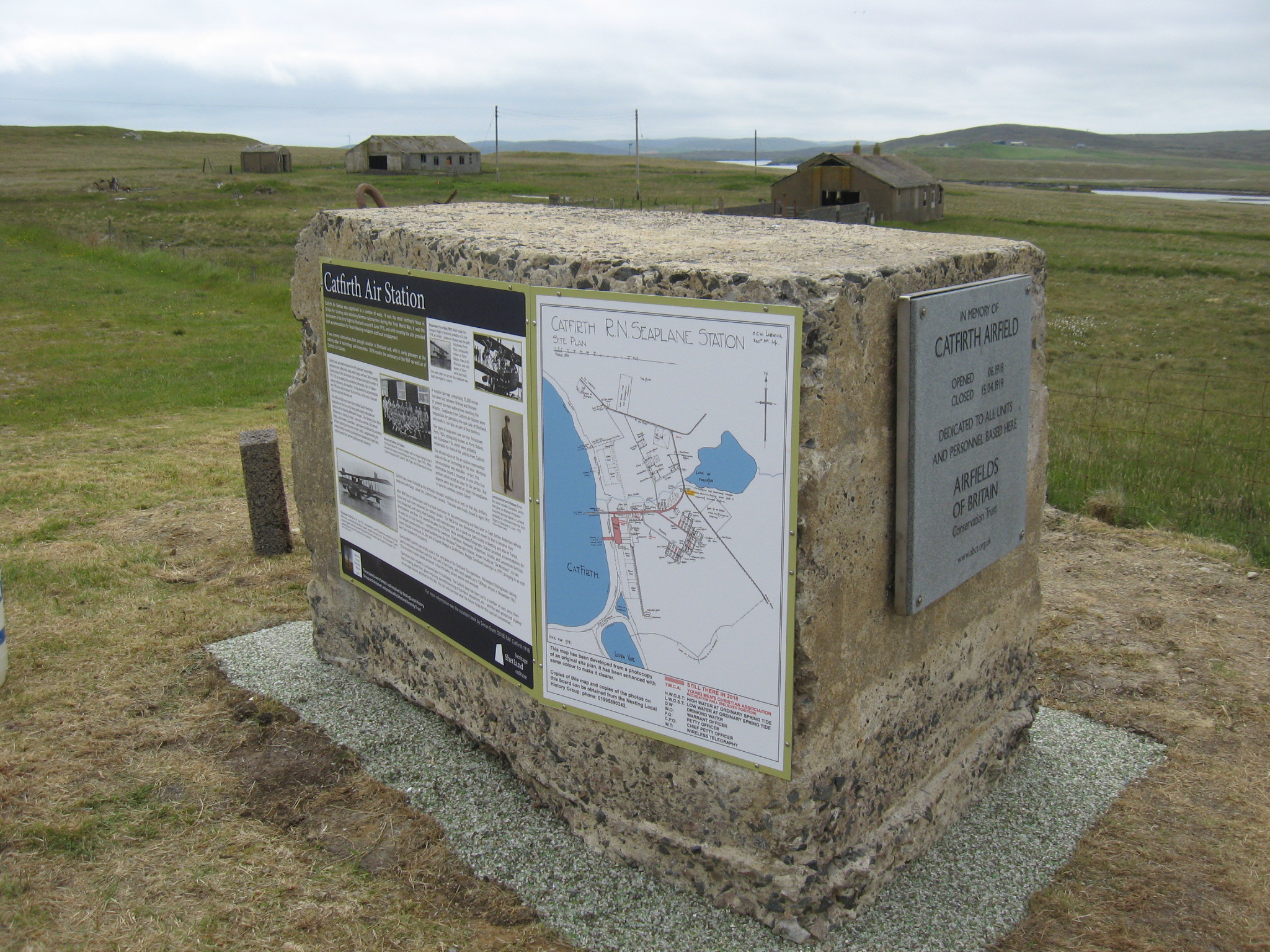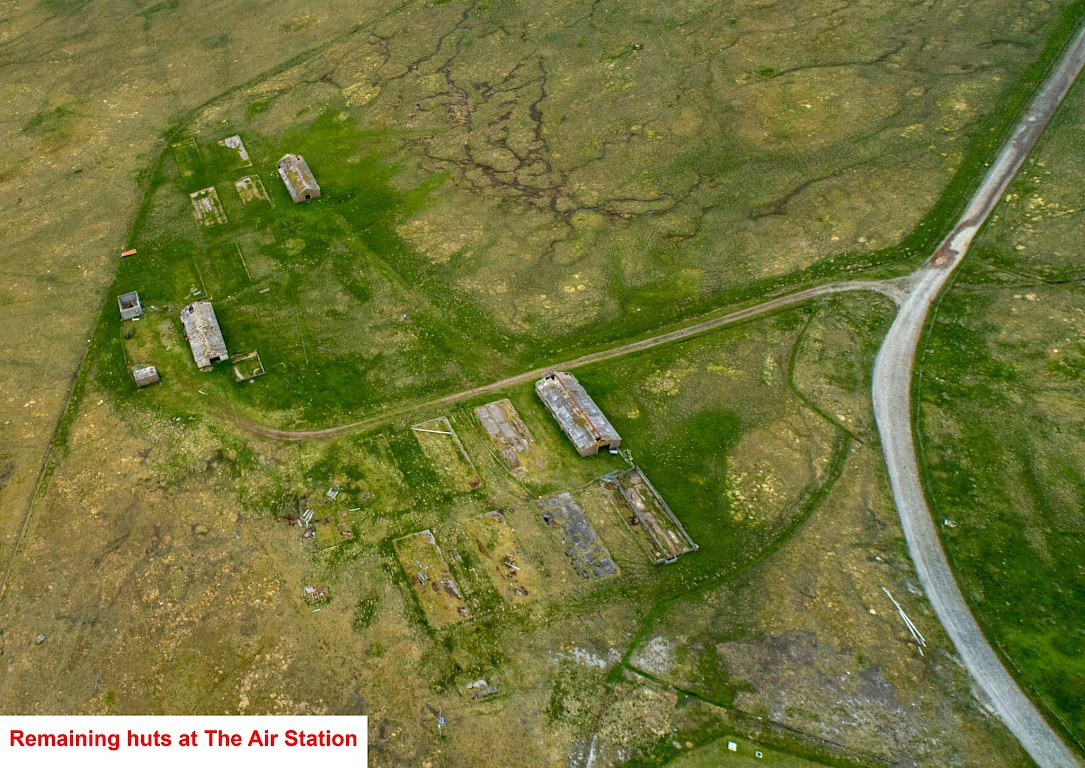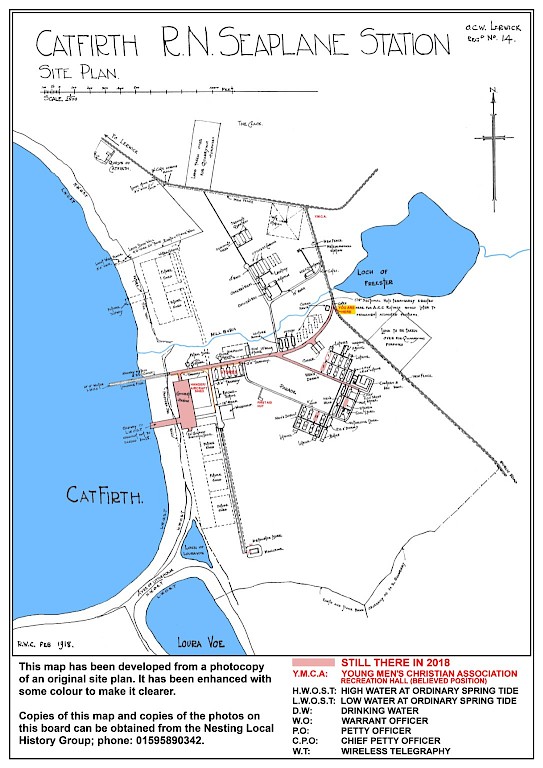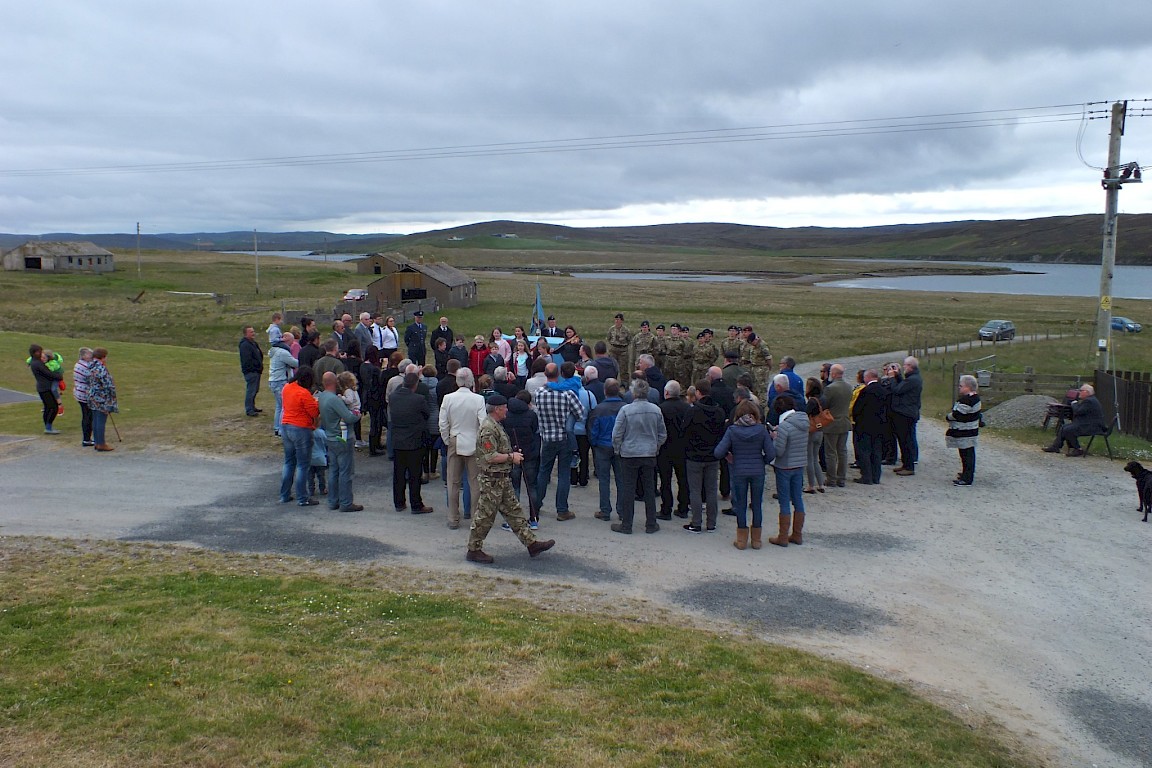RAF Catfirth was a First World War seaplane base, which was first under Royal Naval Air Service (RNAS) control, and later transferred to the Royal Air Force (RAF) — once the RAF was formed.
Catfirth Air Station was significant in a number of ways. It was the most northerly base in Britain for tracking and attacking German submarines during the First World War, it was the destination of the first flight to Shetland around 8 June 1918, and the site provided accommodation for South Nesting residents until the late-1970s, and local employment until recently. It was enemy submarines that brought aviation to Shetland and, with it, early pioneers at the cutting edge of technology and innovation. 2018 marks the centenary of the RAF as well as of Catfirth Air Station.
Catfirth was selected because the firth provided reasonably sheltered anchorage, reached a depth of 27.5m, and was 3km in length. Construction of the 36-hectare site took place during the winter 1917-18, an amazing feat considering timescale, lack of labour-saving machinery, and weather. It was planned to accommodate over 700 men and to house 18 aircraft but in the end it housed 450 men and only five aircraft.
The influx of 450 men more than trebled South Nesting’s population of the time, particularly noticeable at services at the Nesting Methodist Chapel. One Nesting lass, Mary Williamson of nearby Friester, married an airman, Richmond Noble, and moved to Australia. Local bairns relished the presence of these visiting servicemen in their midst, supplementing the family income by selling them skaadimans heads (sea urchins) which the airmen fashioned into lanterns!
A massive barrage comprising 70,000 mines had been laid between Orkney and Norway to prevent German submarines reaching the Atlantic. Seaplanes from Catfirth Air Station were responsible for patrolling the east side of Shetland, and south to Fair Isle, as part of that defence.
Two types of seaplanes saw service: Porte Boats and Felixstowe F3s. The infrastructure at the air station represented state-of-the-art technology of the time. Wireless communication was available; in fact, this information board is mounted on one of the anchors used to secure the stays for the 76m-long aerials. But pigeons were also carried on board the seaplanes in case the wireless system failed!
Catfirth was never finished as the Armistice brought hostilities to an end and, on that day, drifters came out from Lerwick into Catfirth, bedecked with flags. The base was finally closed in April 1919. After WWI the air station was sold to a local contractor for decommissioning and then later to Capt James Anderson whose house was built from reclaimed air-station blocks. The YMCA hut was dismantled and moved to Voe to become their first village hall, and many other buildings and materials were put to good use both locally in Nesting and also in Tresta, Northmavine and Brae.
For several decades the Officers’ Mess and Wireless Telegraphy Station provided accommodation for as many as six local families – members of the Sandison, Thompson, Newlands, Robertson, Goudie, and Laurenson families. The longest continuously occupied building was “The Wireless”, the Wireless/Telegraphy Station. Its two rooms housed a family of six, the last occupant leaving it in 1978, bringing to an end over four decades of occupancy.
During WWII Catfirth was briefly used in the early days of the Shetland Bus for Norwegian fishing boats taking part in resistance activities – until a hurricane struck in November 1941 with wind speeds up to 130mph, resulting in seven boats anchored in the firth being driven ashore and wrecked. Operations then moved to Lunna and later Scalloway.
The Catfirth base has been put to a number of uses since then: block-making, plant hire, glass-recycling, decommissioning of fish-farm equipment, etc – and the well-preserved slipway encourages leisure activities to this day. One can only surmise what the future holds for this special centenarian…
For more information see the excellent book by Simon Gunn (2018): RAF Catfirth 1918







